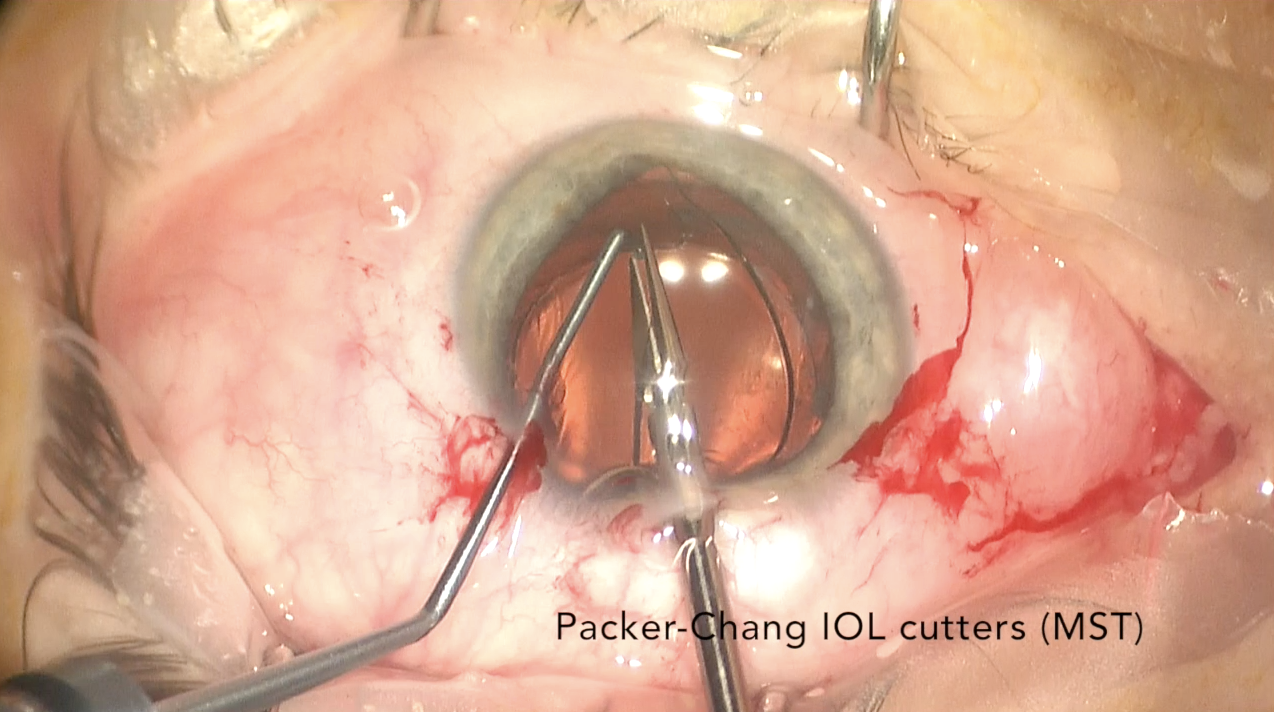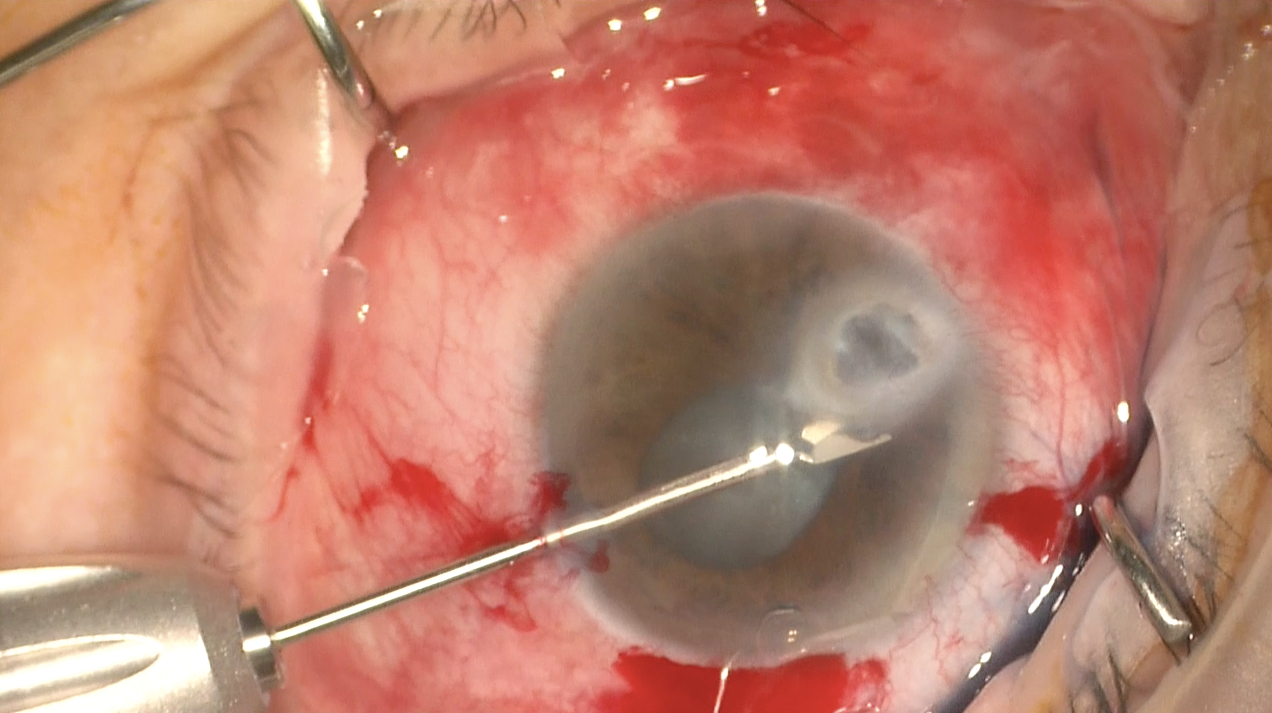Article
The value of microinstrumentation in successful surgery
Microsurgical instruments enable surgeons to perform complicated anterior segment eye procedures through good control of tissue handling. In this article, Dr Little explains how fine-gauge instruments allow for procedures such as iris reconstruction to be performed far more easily than was previously possible.
Take-home message: Microsurgical instruments enable surgeons to perform complicated anterior segment eye procedures through good control of tissue handling. In this article, Dr Little explains how fine-gauge instruments allow for procedures such as iris reconstruction to be performed far more easily than was previously possible.
By Dr Brian Little, BSc, MA, FHEA, FRCS, FRCOphth
As a general ophthalmologist specialising in cataract surgery concentrating on complex anterior segment and reconstruction cases (i.e., lens dislocation, iris and capsule damage), I have found that attaining adequate visual outcomes can be limited by the range of instruments available.
Over the last few years there has been a surge in the availability of single and reusable micro surgical instruments. However, it has become evident that of the instruments available there is a high degree of variation in quality. When it comes to ophthalmic surgery, it is vital that both the quality and controllability of microinstruments are high.
My experiences with microinstrumentation
I have personally tried many different microinstruments, including single use, over the span of my surgical career, and in my experience the range, type and design of instruments from MST (MicroSurgical Technology [MST), Redmond, WA, USA) are the best available tools for my needs. This is because they provide instruments specially designed for anterior segment surgery where structures can be manipulated through tiny incisions (i.e. paracentesis of typically 0.9mm).
The cases I encounter within my practice are complex and challenging. Some of my patients have smaller eyes where there is limited access. I may also need to perform iris tissue reconstructions or remove iris adhesions. In these cases only very fine instruments can be used in order to avoid collateral damage, a situation where less refined instruments are more difficult to use and sometimes less safe. I find that MST’s coaxial instruments do not impede visualisation and control when manipulating and working with these delicate tissues and structures. In situations where there is impaired visibility or limited space and a complicated procedure to perform, the functionality of microinstruments is most evident. These instruments also have squeeze handles with a rotating mount for the instrument tip that allows you to maintain a comfortable and controlled hand position whilst varying the rotational position of the mounted instrument.
Complex cases require detailed surgical planning and a favoured primary strategy. This involves a clear understanding of how you are going to perform the procedure which requires knowledge of the instruments needed. You need the best instruments for the job and this translates into better outcomes. All surgeons know their own capabilities but with the right instruments these capabilities are extended and the chances of success increases.
A fine surgical armoury

Figure 1My surgical armoury includes several fine-gauge instruments.
Lens exchange
For lens exchange cases, I find that the Packer-Chang scissors (Figure 1) are particularly suited for IOL cutting as they carry minimal risk of collateral damage to the capsule, iris or endothelium. The fine tips, controlled opening, sharpness and precision of the scissors allows the IOL to be cut cleanly with minimal pressure, thereby reducing the risk of torsion so there is no lens twisting. They cut very cleanly to divide the lens in a controlled manner, making lens exchanges a lot easier.
Capsulorhexis
I also rely heavily on Seibel coaxial capsulorhexis forceps, even in routine cases where the situation has become challenging enough to require them. This is especially true of cases where there is minimal space to work in or when chamber collapse occurs such that ordinary larger gauge rhexis forceps are not appropriate. There is of course the possibility of using a needle in this situation, but downward pressure has to be applied first before any tearing traction can be applied to the capsule. This inherently limits one axis of movement, but better control of the tear is only possible if you are able to do it from most angles which can only be achieved with forceps. In these cases, the forceps have helped to make difficult situations easier as I am able to control the microenvironment that I am working within and thus minimise any chance of intra- and post-operative complications. So the coaxial capsulorhexis forceps have become a very useful adjunct to have available whenever needed (Figure 2).

Figure 2
Iris reconstruction
In complex iris reconstruction cases, iris grasping forceps allow for superior controlled traction which would otherwise be traumatic when trying to suture. Most iris reconstruction is under conditions when a sector of iris has been lost traumatically from the iris root and the pupil margin. In order to close the gap, specialist instruments are imperative because the iris tissue is extremely delicate to work with (one pull too hard and you have created a larger defect). The art is delicate handling and minimal pulling trauma; the 23g Ahmed Micrograsping iris forceps allow for considerable control with fine tolerances. The fine-tipped forceps allow me to gently tease the iris around whilst maintaining access close to the irido-corneal angle and see what is going on at the tip of the forceps which is vital during iris reconstruction. You need to use gentle counter-pressure when passing the needle through the iris, as otherwise it readily cheese-wires. A key element and important factor in iris reconstruction is that you have to avoid excessive force. These instruments allow me to do this confidently and predictably with relative ease.
Anterior segment scissors & forceps
Anterior segment iris scissors also remain in my surgical tray. In a recent complex case of anterior synechiae to a previous corneal perforation together with floppy iris and mature cataract in a monocular extreme myope, the 23g Hoffman/Ahmed horizontal scissors were my saviour in finely dissect the iris adhesions on the underside of the perforation (Figure 3). This allowed the maximum amount of iris to be preserved and provided sufficient space to expose the cataract in an already very challenging case.

Figure 3
Previously, I used vitreoretinal instruments such as membrane-peeling forceps & retinal scissors. However they are not designed for anterior segment use and some are angled in such a way that the tip is not optimally positioned for achieving a suitable capsulorhexis. These vitreoretinal instruments are very expensive. Now, with the advent of disposable tips available from MST, it makes for a great financial case in the public hospital environment where sterilisation costs are often difficult to justify. The single-use tips are used with their high quality reusable handles, and the disposable tips make clear sense in many situations.
Reducing surgical risks with microinstrumentation
Prior to using microinstruments, I was more cautious in attempting complex cases. This was because risk factors are increased when instruments that allow for appropriate tissue control are not available. Furthermore, there is a learning curve when it comes to surgery; this includes the initial phases of feeling “unconsciously incompetent” to finally feeling “consciously competent” as you gain more experience, to becoming ultimately “unconsciously competent”. The learning curve requires you to judge each case and its associated risks; using the appropriate microsurgical instruments significantly reduces these risks through greatly enhanced control and refined handling of anterior segment tissues.
Dr Brian Little, BSc, MA, FHEA, FRCS, FRCOphth.
E: brianlittle@blueyonder.co.uk
Brian Little, MA, DO, FRCS, FRCOphth is a Consultant Ophthalmologist and Training Director of the Cataract Service at Moorfields Eye Hospital, London, UK and is the current President of the UK & Ireland Society of Cataract & Refractive Surgeons. He has no financial interest in MicroSurgical Technology.
Newsletter
Don’t miss out—get Ophthalmology Times updates on the latest clinical advancements and expert interviews, straight to your inbox.




